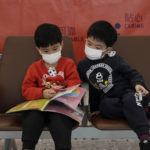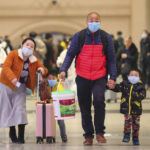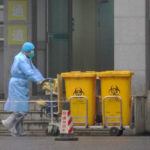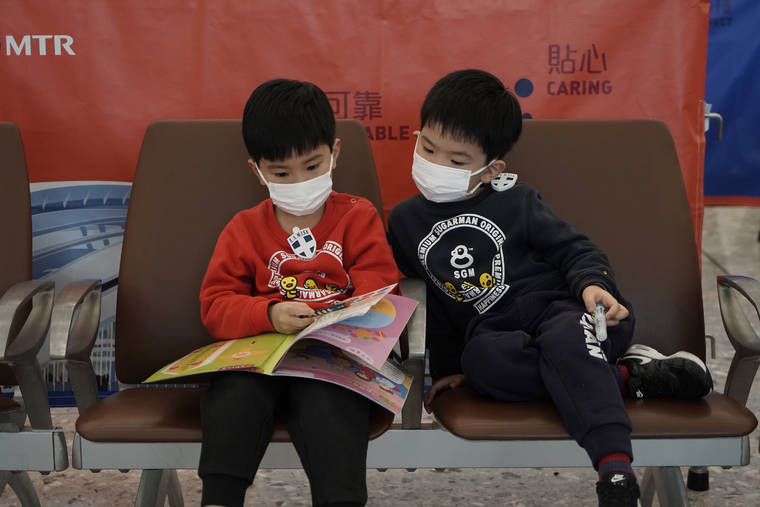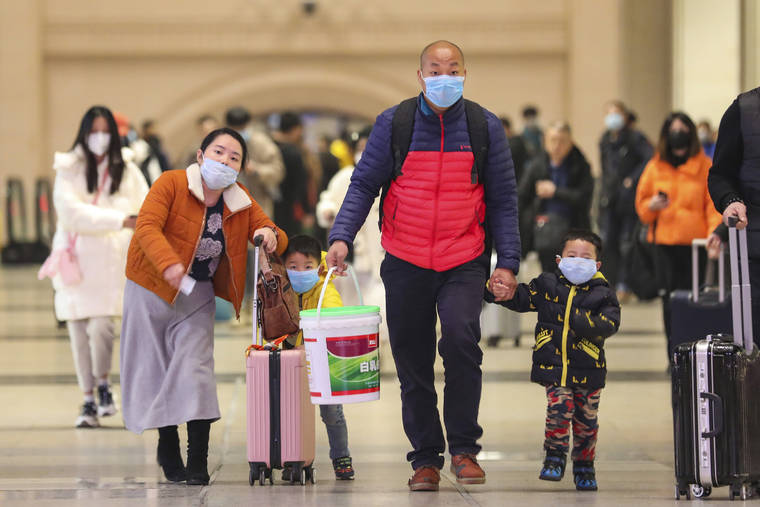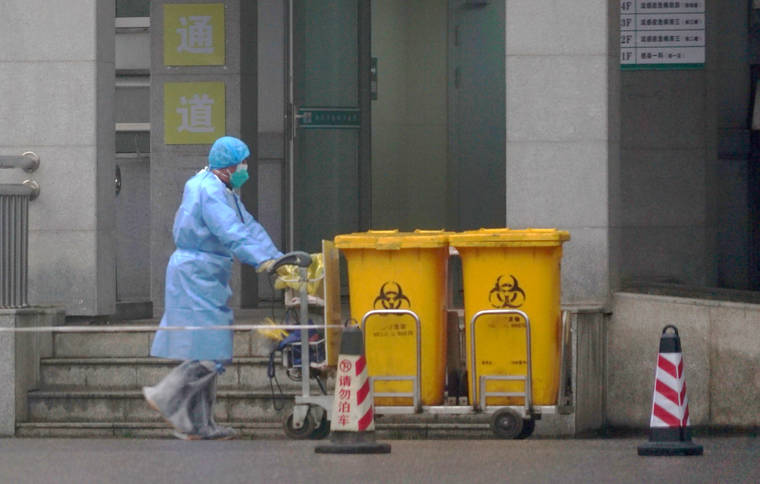BEIJING — The Chinese city of Wuhan shut down outbound flights and trains as the world’s most populous country battled the spread of a new virus that has sickened hundreds of people and killed 17, Chinese state media said early Thursday.
The state-owned People’s Daily newspaper said no one would be allowed to leave the city of several million people. The official Xinhua News Agency said no one would be permitted to leave without a specific reason. Train stations and the airport were to shut down at 10 a.m. Buses, subways, ferries and long-distance shuttle buses would also be temporarily closed.
Most of the cases are in Wuhan and surrounding Hubei province, but dozens of infections have popped up this week around the country as millions travel for the Lunar New Year holiday, one of the world’s largest annual migrations of people. A handful of infected people who came from Wuhan have also been found overseas.
In Geneva, the World Health Organization put off deciding whether to declare the outbreak a global health emergency and asked its expert committee on the issue to continue meeting for a second day Thursday. The organization defines a global emergency as an “extraordinary event” that constitutes a risk to other countries and requires a coordinated international response.
The number of new cases has risen sharply in China, the center of the outbreak. The 17 deaths announced Wednesday night were all in Hubei province, where the outbreak emerged in the provincial capital of Wuhan late last month. Wuhan authorities said the province has confirmed 444 cases, which would bring the national total to more than 500.
“There has already been human-to-human transmission and infection of medical workers,” Li Bin, deputy director of the National Health Commission, said at a news conference Wednesday with health experts. “Evidence has shown that the disease has been transmitted through the respiratory tract and there is the possibility of viral mutation.”
The illness comes from a newly identified type of coronavirus, a family of viruses that can cause the common cold as well as more serious illnesses such as the SARS outbreak that spread from China to more than a dozen countries in 2002-2003 and killed about 800 people. Some experts have drawn parallels between the new coronavirus and Middle Eastern respiratory syndrome, another coronavirus that does not spread very easily among humans and is thought to be carried by camels.
But WHO’s Asia office tweeted this week that “there may now be sustained human-to-human transmission,” which raises the possibility that the epidemic is spreading more easily and may no longer require an animal source to spark infections, as officials initially reported.
Authorities in Thailand on Wednesday confirmed four cases — a Thai national and three Chinese visitors. Japan, South Korea, the United States and Taiwan have all reported one case each. All of the illnesses were of people from Wuhan or who recently traveled there.
“The situation is under control here,” Thai Public Health Minister Anutin Charnvirakul told reporters, saying there are no reports of the infection spreading to others. “We checked all of them: taxi drivers, people who wheeled the wheelchairs for the patients, doctors and nurses who worked around them.”
Macao, a former Portuguese colony that is a semi-autonomous Chinese city, reported one case Wednesday.
Some experts said they believe the threshold for the outbreak to be declared an international emergency had been reached.
Dr. Peter Horby, a professor of emerging infectious diseases at Oxford University, said there were three criteria for such a determination: The outbreak must be an extraordinary event. There must be a risk of international spread, and a globally coordinated response is required.
“In my opinion, those three criteria have been met,” he said.
In response to the U.S. case, President Donald Trump said: “We do have a plan, and we think it’s going to be handled very well. We’ve already handled it very well. … we’re in very good shape, and I think China’s in very good shape also.”
In Wuhan, pharmacies limited sales of face masks to one package per customer as people lined up to buy them. Residents said they were not overly concerned as long as they took preventive measures.
“As an adult, I am not too worried about the disease,” Yang Bin, the father of a 7-year-old, said after buying a mask. “I think we are more worried about our kids. … It would be unacceptable to the parents if they got sick.”
Medical workers in protective suits could be seen carrying supplies and stretchers into Wuhan Medical Treatment Center, where some of the patients are being treated.
Travel agencies that organize trips to North Korea said the country has banned foreign tourists because of the outbreak. Most tourists to North Korea are either Chinese or travel to the country through neighboring China. North Korea also closed its borders in 2003 during the SARS scare.
Other countries have stepped up screening measures for travelers from China, especially those arriving from Wuhan. Worries have been heightened by the Lunar New Year holiday rush, when millions of Chinese travel at home and abroad.
Officials said it was too early to compare the new virus with SARS or MERS, or Middle East respiratory syndrome, in terms of how lethal it might be. They attributed the spike in new cases to improvements in detection and monitoring.
“We are still in the process of learning more about this disease,” Gao Fu, an academician of the Chinese Academy of Sciences and head of the Chinese Center for Disease Control, said at the news conference.
Gao said officials are working on the assumption that the outbreak resulted from human exposure to wild animals being sold illegally at a food market in Wuhan and that the virus is mutating. Mutations can make it spread faster or make people sicker.
Jiao Yahui, a health commission official, said the disease “will continue to develop. It has developed different features compared with the early stage, and the prevention and precautionary measures need to change accordingly.”
One veteran of the SARS outbreak said that while there are some similarities in the new virus — namely its origins in China and the link to animals — the current outbreak appears much milder.
Dr. David Heymann, who headed WHO’s global response to SARS in 2003, said the new virus appears dangerous for older people with other health conditions, but doesn’t seem nearly as infectious as SARS.
“It looks like it doesn’t transmit through the air very easily and probably transmits through close contact,” he said. “That was not the case with SARS.”
Associated Press journalists Dake Kang and Emily Wang in Wuhan, China; Tassanee Vejpongsa in Bangkok, Thailand; Hyung-jin Kim in Seoul, South Korea; Maria Cheng in London; Yanan Wang in Beijing and Alice Fung in Hong Kong contributed to this report.
